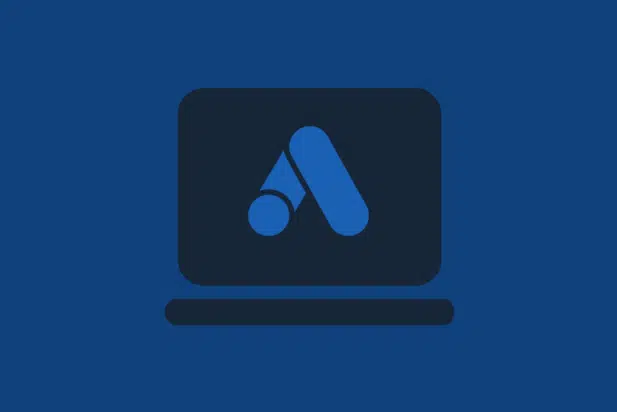Meeting the website policy requirements is the first step. But to actually maximize that $10,000 monthly budget from Google Ad Grants, your website needs to be designed for conversions and user engagement.
Let’s walk through some of the website best practices for Google Ad Grant success.
We covered this topic in our Nonprofit Website Office Hours series. Check out the recording from that webinar above for additional insights and examples.
Understand Your Audience
Does your website “speak” to your ideal audience?
Before we can answer that question, we have to know who our ideal audience is!
Take some time to create an audience persona, which will give your large data set of “audience” a face and a name. Not only will this help you create a better website, it will also help you understand what to target in your Google Ad Grant.
Because the Google Ad Grant can struggle with highly competitive keywords, we sometimes need to target keywords that aren’t as obvious.
For example, before someone searches for “donate to animal shelter”, they might search for “how to help cats”. The keyword “donate to animal shelter” has so much competition that Google Ad Grant accounts will have a hard (to almost impossible) time of showing up.
But “how to help cats” is much less competitive.
If you know what your audience is searching for before they search for the competitive keywords, you can meet them there. You can also create a website that perfectly matches what your ideal audience values and is likely to resonate with.
Set Up Conversion Tracking
While it often gets overlooked because of how technical it can become, conversion tracking is critical for any nonprofit marketing, including the Google Ad Grant.
Without clear conversion tracking, you’ll struggle to demonstrate the value of your grant spending. But first, let’s make sure we’re on the same page with what a “conversion” really means.
What Is a “Conversion”?
Simply put, a conversion is any meaningful action on your website that moves your nonprofit’s mission forward. Notice the emphasis on “meaningful” — we’re not talking about someone spending 30 seconds on a page or scrolling halfway down your homepage.
Let’s look at some examples using a typical animal shelter website:
- Donate form submissions: Obviously important for every nonprofit
- Adoption application submissions: Moving animals into homes
- Volunteer signup forms: Building your supporter base
- Newsletter subscriptions: Growing your engaged audience
Each of these represents a visitor taking a step that directly supports your mission rather than just browsing around your site. And we can set up these conversions (and more) in Google Analytics 4 and Google Tag Manager.
When it comes to your Google Ad Grant, conversion tracking answers the fundamental question: “Is this working?”
Without conversion tracking, you’re essentially throwing darts in the dark. You might see that 100 people clicked your ad, but you have no idea if any of them actually donated, volunteered or took any meaningful action.
But with proper tracking in place, you might discover that people are willing to travel 100+ miles to adopt animals they find through your ads, which means you can expand your geographic targeting much wider than you initially thought.
Or you might find that the keywords you expected to work didn’t. But the long shot keywords paid off. Conversion data tells you all this and more.
The specifics of how to actually set up conversion tracking is outside the scope of what we can cover here since it’s technical and unique to each organization.
But if you’re looking for an easy place to get started with conversion tracking (and setting up your Google Ad Grant in general), check out the Google Ad Grant Catalyst Program.
Have a Clear Call to Action
Beyond tracking conversions, your website also needs to be ready to convert visitors into supporters.
That means easy navigation that guides visitors toward specific actions like signing up for newsletters, making donations or registering for events. Every page should have a clear purpose and obvious next steps for visitors.
Even informational pages should have some kind of call to action (CTA), whether that’s in page content, the sidebar or a popup.
Visitors shouldn’t have to think about where to click or what to do next. When someone lands on your website from a Google ad, they should immediately understand your mission and see clear ways to get involved or support your cause.
If you aren’t sure, try watching friends or family navigate your website. Where do they go first and where do they get stuck? Do they see your CTA or do they breeze right by it?
If you find that changes are needed because people aren’t converting, then focus on the small changes that make a big impact.
Clean, Simple Design
Donors want to support organizations that appear competent, professional and have a clear mission. Your website is your first chance to convey you’re a strong bet to solve a problem they’re passionate about.
A clean, memorable design with bold elements shows visitors that your nonprofit takes itself seriously and builds trust with visitors.
While the work your nonprofit does is complicated and nuanced, your website should make it simple and easy to understand what you do and how you do it.
The typical visitor will stay on your website for 15 seconds or less, which means you just don’t have time to share all the details right away. Instead, focus on a clear headline and subheadline that immediately explains your mission.
Related Read: Nailing Your Messaging So Visitors “Get It” Immediately
Additionally, add an image that represents your nonprofit. Focus on images of people and animals, as these will resonate more with your audience than landscapes or objects.
It’s also important to note that the majority of people won’t make it past the “above the fold” section (the section that’s visible without scrolling), so focus your effort on that section rather than getting overwhelmed trying to change everything all at once.
Once the top of your page is dialed in, you can tackle the rest.
Flawless Mobile Design
More than half of your Google Ad Grant traffic will likely come from mobile devices, so your website must provide a great experience for visitors on smartphones and tablets. This means more than just making sure your site displays properly on smaller screens.
Delivering an incredible mobile experience requires creating clear pathways that work with touch navigation. Buttons need to be large enough to tap easily, forms should be simple to complete on mobile keyboards, and your most important information should be immediately visible with limited scrolling.
Your mobile website experience should be just as conversion focused as your desktop version.
Don’t hide important calls to action or make key information harder to find on mobile devices. If anything, mobile visitors may need even clearer direction since they’re often browsing quickly while multitasking.
Direct Your Ads to Relevant Pages
You always need to make sure that the page you’re sending Google Ad Grant traffic to is relevant to what the person searched.
This video explains exactly what relevance means in the context of Google Ad Grant accounts and why it’s so important.
In practice, this means that if your nonprofit helps both patients and medical professionals, you need to make sure you’re sending patient-related keywords (like “treatment for sickle cell disease”) to the pages that give them the answers they need.
On the other hand, if you’re promoting keywords related to medical professionals (like conferences or medical journals), you need to send them to the pages most relevant to them.
If your homepage is created for both patient and professional audiences, you may need to create a page that is just about patient issues, another for doctors, and so on.
Your goal is to make it clear to the user that they’re in the right place (in other words, the relevant place) for whatever they just searched.
Do I Need to Create New Pages?
If you don’t have a relevant page for a keyword you want to target, then you will need to create a new page.
The most common example comes from nonprofits with several different offers. For example, if your nonprofit offers five different services and you list all these services with a short description on one single page, then it’s likely that a visitor will have to scroll and navigate just to find the service they need.
Not only is that a poor user experience, that’s also breaking the chain relevancy that’s so critical for Google Ad Grant success.
Instead, create a page dedicated to each service. For example, if your nonprofit offers resume support, internships and free professional clothing for interviews, then these should all have their own page.
Otherwise, the person who clicked an ad after searching for “resume tips” will land on a page about internships and wonder how they got there!
Of course, you can promote your other relevant services. But make sure you let the user know they’re in the right place first.
Not only will the extra pages help with your Google Ad Grant, but you’ll also end up with a well structured website!
Related Read: 4 Easy Ways to Improve Your Nonprofit Website Structure
Closing Thoughts
Optimizing your website for Google Ad Grant success doesn’t require a complete overhaul. Most nonprofits can make meaningful improvements by focusing on the fundamentals: clear conversion tracking, obvious calls to action and making sure mobile visitors don’t get frustrated.
The goal isn’t perfection — it’s progress. Every improvement you make to your website will help you get more value from those Google Ad Grant dollars and turn more visitors into supporters.

Logan Mastrianna is the founder of Digital Tabby, a Google Partner Agency that specializes in Google Ad Grant management and training for nonprofits. After spending a decade working in animal welfare and another decade in digital marketing, he brings a unique perspective to nonprofit marketing challenges.
Logan lives in Colorado with a Pomeranian mix named Foxie and a rotating crew of foster cats and kittens. You can connect with him on LinkedIn or reach out directly via his website.
What You Should Do Now
01. Come to Nonprofit Website Office Hours
We cover a new topic every few weeks. Plus get a live answer to any website-related question you're wrestling with.
02. Book a Website Call
Find a time to discuss your nonprofit's website needs. Discover what's worked for other nonprofits like you and see how easy building your new site can be.
03. Start a Free Website Trial
Try our nonprofit website platform for yourself. Instantly get access to every feature to see if it's the right fit for your needs. No credit card required.

Comments